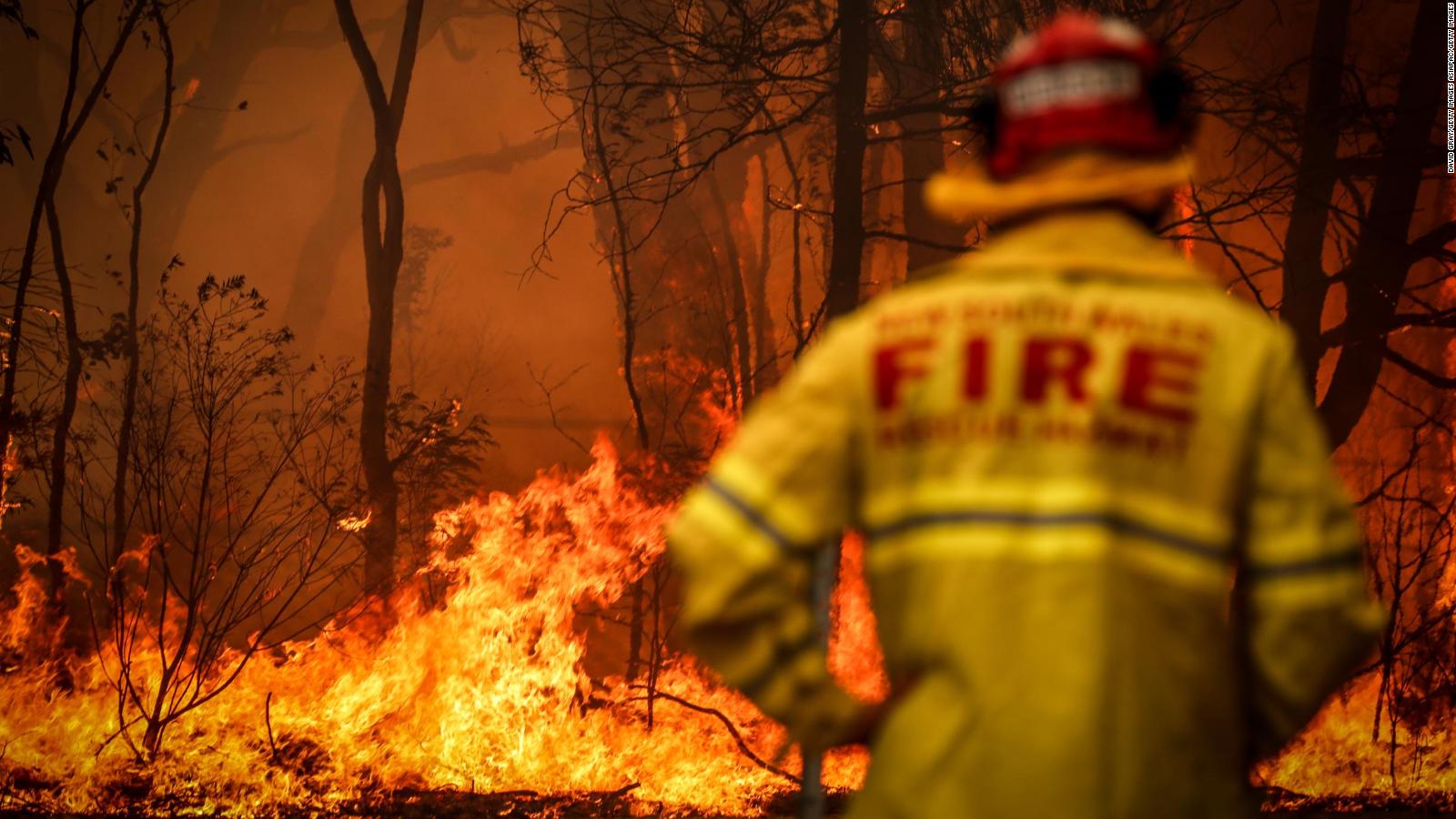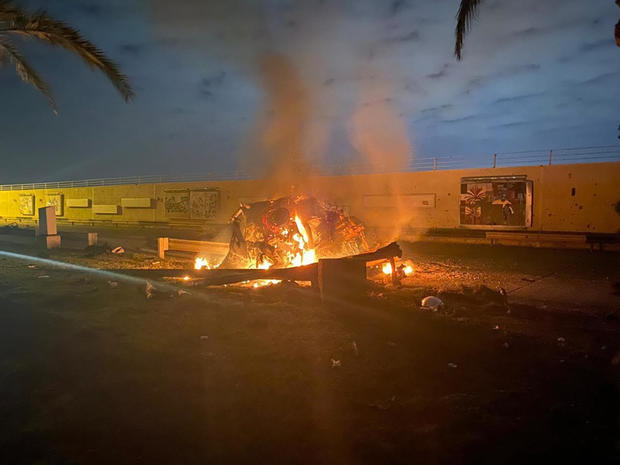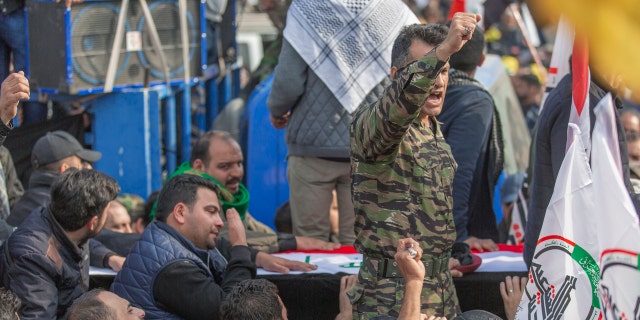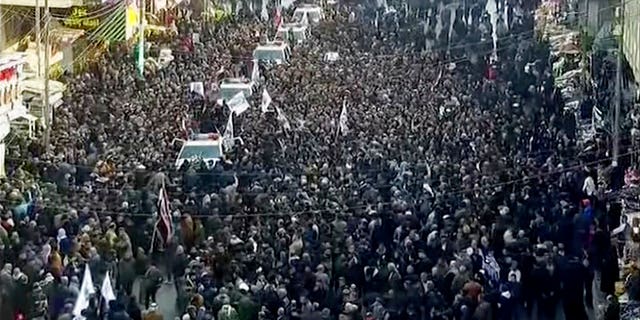President Donald Trump on Saturday warned Iran that if it retaliates for the killing of one of its top leaders, Gen. Qassem Soleimani, it will face U.S. attacks on 52 targets, a number he said was symbolic.
The president tweeted that the number of targets matched the number of hostages held by Iran in 1979, when 52 American diplomats and citizens were held for 444 days.
"Let this serve as a WARNING that if Iran strikes any Americans, or American assets, we have.........targeted 52 Iranian sites (representing the 52 American hostages taken by Iran many years ago), some at a very high level & important to Iran & the Iranian culture, and those targets, and Iran itself, WILL BE HIT VERY FAST AND VERY HARD," he said. "The USA wants no more threats!"
Trump's tweet was vaguely worded, but the United Nations Security Council appears to suggest the targeting of cultural heritage sites is prohibited.
Iranian Foreign Minister Mohammad Javad Zarif responded early Sunday, accusing Trump of threatening a "war crime" and breaching the norms of international law.
"That is, a big(ly) "no no"," he said.
Trump added in further tweets that "They attacked us, & we hit back. If they attack again, which I would strongly advise them not to do, we will hit them harder than they have ever been hit before!"
Thousands gathered in Baghdad Saturday to mourn the death of Soleimani and others killed in the U.S. airstrike, which has sent tensions soaring throughout the Middle East.
Also on Saturday, the U.S. Central Command said in a statement that there were two early evening attacks, including rocketfire, near Iraqi bases that host American and coalition forces.
No injuries to coalition service members were reported.
“We have increased security and defensive measures at the Iraqi bases that host anti-ISIS Coalition troops,” Col. Myles B. Caggins III, a coalition spokesman, said in a statement.
Let our news meet your inbox. The news and stories that matters, delivered weekday mornings.
Soleimani, the influential commander of Iran's secretive Quds Force, was killed by drone strikes Friday at the Baghdad airport. Iranian President Hassan Rouhani later tweeted: "The great nation of Iran will take revenge for this heinous crime."
Trump said Friday the attack was undertaken to prevent war and further bloodshed for Americans who had been targeted by Soleimani in future operations.
"We took action last night to stop a war," he said in a televised address to the nation. "We did not take action to start a war."
But the White House has yet to offer the public proof that the general's plans were significantly out of line with his history of directing Iran's proxy wars and covert operations, which have indeed cost American lives.
The White House blamed violent protests earlier this week at the U.S. Embassy in Baghdad on the general.
Democratic presidential candidate Sen. Elizabeth Warren of Massachusetts tweeted that Trump was "threatening to commit war crimes."
"We are not a war with Iran," she wrote. "The American People do not want a war with Iran. This is a democracy. You do not get to start a war with Iran, and your threats put our troops and diplomats at greater risk. Stop."
Some congressional leaders, including U.S. Rep. Adam Schiff, D-California, have said Americans deserve to see the evidence behind the targeting of Soleimani.
Two senior Capitol sources told NBC News that Congress on Saturday received formal White House notification of the attack.
Such documentation, which the sources said was classified, is required by law.
House Speaker Nancy Pelosi, D-California, said in a statement Saturday night that the notification was insufficient.
“This classified War Powers Act notification delivered to Congress raises more questions than it answers," she said. "This document prompts serious and urgent questions about the timing, manner and justification of the Administration’s decision to engage in hostilities against Iran."
She said the White House's lack of transparency in the Soleimani attack is concerning.
"The highly unusual decision to classify this document in its entirety compounds our many concerns, and suggests that the Congress and the American people are being left in the dark about our national security," Pelosi said.
The speaker called on the Trump administration to brief Congress on its plans for Iran.
Trump's tweet came after a senior Iranian Revolutionary Guards commander, General Gholamali Abuhamzeh, was quoted by Tasnim news agency as saying late on Friday that Iran will punish Americans wherever they are within reach of the Islamic Republic, and raised the prospect of attacks on ships in the Gulf.
"The Strait of Hormuz is a vital point for the West and a large number of American destroyers and warships cross there. ... Vital American targets in the region have been identified by Iran since long time ago. ... Some 35 U.S. targets in the region as well as Tel Aviv are within our reach," he was quoted as saying.
A spokesman for the U.S. Government Publishing Office said the website of its Federal Depository Library Program was hacked Saturday night, and that authorities were investigating.
Although officials have not said who is responsible for the hack, a group purporting to be Iranian hackers claimed responsibility.
"An intrusion was detected on GPO’s FDLP website, which has been taken down," GPO spokesman Gary Somerset said in a statement. "GPO’s other sites are fully operational. We are coordinating with the appropriate authorities to investigate further."
The White House and the FBI declined to comment on the hacking.
Leigh Ann Caldwell, Alex Moe, Sally Bronston and Reuters contributed.
https://news.google.com/__i/rss/rd/articles/CBMiUWh0dHBzOi8vd3d3Lm5iY25ld3MuY29tL25ld3Mvd29ybGQvdHJ1bXAtdGhyZWF0ZW5zLWlyYW4tYXR0YWNrcy01Mi1zaXRlcy1uMTExMDUxMdIBLGh0dHBzOi8vd3d3Lm5iY25ld3MuY29tL25ld3MvYW1wL25jbmExMTEwNTEx?oc=5
2020-01-05 10:38:00Z
52780536809258










